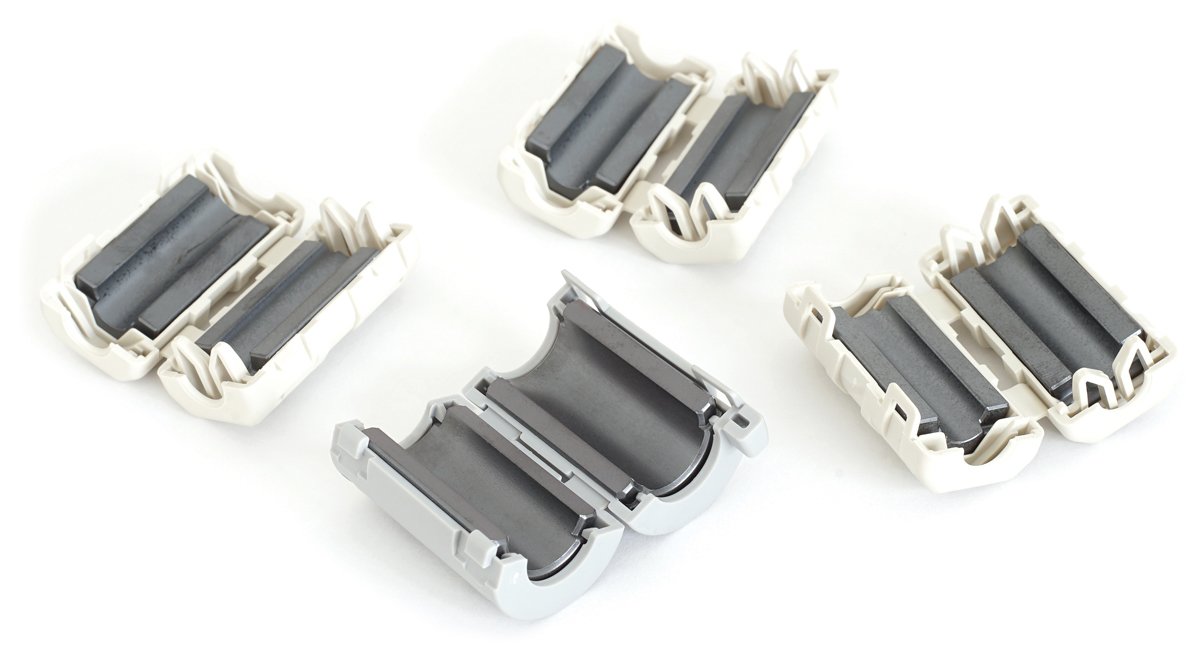n previous articles (references 1 and 2), we covered the basics of EMI filters and some of the common reasons why they often fail to provide the insertion loss performance we expect from them.
We learned that the most common reason why filters fail, (besides bad coupling paths and cable routing around the filter, improper bonding and grounding, and non-ideal placement within the equipment) is that EMI filters are, more often than not, specified using 50Ω termination impedances on both the line and load sides during the insertion loss measurement.
The 50Ω/50Ω filter insertion loss measurement method is easy to perform because most RF measurement apparatus (connectors, cables, receivers, etc.) are built around a characteristic impedance of 50Ω. However, we know that filter performance is highly dependent on termination impedance and that real-life circuits rarely contain such ideal 50Ω impedances. Therefore, the 50Ω insertion loss test method cannot be relied upon to accurately predict filter performance once installed in actual equipment.
The measurement method found within EN 55017 covers the frequency range from 9 kHz to several GHz depending on the device and test circuit. The standard says that the measurement methods found within it may be applied up to 40 GHz.
The standard also includes procedures for laboratory tests (type tests) as well as for factory (routine) tests.
It’s important to note that test methods are defined for conditions with and without bias. This is important because measurements conducted under bias conditions can help determine the potential non-linear behavior of the EMC filtering devices, such as saturation effects in inductors with magnetic cores. The standard says that “this testing serves to show the usability in a specific application (such as frequency converters that produce high amplitudes of common-mode pulse current and thus may drive inductors into saturation).”
I don’t know about you, but I like the statement above where it says, “in a specific application.” This leads me to believe that this is not a one size fits all requirement like the old 50Ω/50Ω test method.
Also, worthy to note is that the “under bias” testing portion of the standard is not required if the non-linear behavior of the filtering device is known or can be proven by some other method. This may save some users of the standard some time if they don’t have to perform under bias testing.
Now that some of the preliminaries are out of the way, let’s move on to the best part of this alternative approach to specifying an EMI Filter.

One well-known passive filter manufacturer conducted thorough testing of the 0.1W/100W method and gained some statistical confidence in their results (reference 4). This manufacturer indicated that where the older 50Ω/50Ω insertion loss measurement method consistently and inaccurately yielded higher levels of performance than what is actually achieved, the 0.1W/100W method is able to produce an attenuation curve that is only slightly less than what is actually achieved in real equipment.
- In Compliance Magazine. (2018, November 12). What Every Electronics Engineer Needs to Know About: Filters. Retrieved from https://incompliancemag.com/article/filters
- In Compliance Magazine. (2019, November 12). Let’s Talk About Why Filters Fail. Retrieved from https://incompliancemag.com/article/lets-talk-about-why-filters-fail
- EN 55017:2011, Methods of measurement of the suppression characteristics of passive EMC filtering devices (CISPR 17:2011)
- CISPR 17 Measurements, 50Ω/50Ω versus 0.1W/100W, The Truth or Everything You Wanted to Know About Attenuation Curves Validity but Were Afraid to Ask. A practical Study using the FN 9675-3-06 Power Line Filter. Schaffner, 690-264A, March 1996.
- Filters should perform in both symmetric and asymmetric mode. That is, they should remove differential and common-mode noise. Some manufacturers offer comparatively smaller filters, but only specify asymmetric performance. These fail to remove differential noise.
- Filters should be rated for the appropriate maximum Line-to-Ground or Line-to-Line voltage for a 3 phase system. This eliminates the uncertainty of whether a filter will work at circuit voltages lower than the maximum filter rating.
- Filters should be rated for the appropriate circuit current and be able to withstand an overload of 140% for at least 15 minutes. This ensures the survival of the filter under overload conditions.
- Filters should be rated for low temperature rise in order to increase their durability and reliability.
- Power filters should be listed by a Nationally Recognized Testing Laboratory (e.g. UL, Intertek). This ensures that a 3rd party has approved the safety of the filters.
- When testing for avionics at 400Hz power, filters should also use Power Factor Correction Coils. This ensures that high reactive currents at 400Hz are neutralized.
- Larger power filters (above 200 Amps) should have an option to be floor standing. This ensures that most of the weight is on the stand rather than on the shielded wall.
- Protection performance for HEMP/EMP filters should be according to MIL-STD-188-125 or IEC 61000-4-24. These are the preeminent standards used today for specifying conducted Point of Entry protection.
- When protecting a facility against HEMP/EMP, it is crucial to indicate if the filters will be installed inside or outside the protective shield. Only one side of the filter has the protective elements;the protection side must be that which is exposed to the threat.
- When using electronic power sources connected to filters, the source should have a transformer in its output circuitry. This minimizes unwanted interaction with filters.
